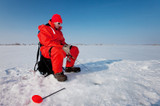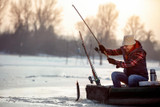The Different Types of Fishing Techniques You Can Try as an Angler
Fishing is an exciting adventure that combines skill, patience, and a touch of luck. Whether you are an experienced angler or new to the sport, learning different fishing techniques and using advanced technology and the right gear can improve your time on the water.
Every fishing technique has unique challenges and is tailored for particular settings and fish species. From the serene focus needed for fly fishing to the thrill of deep sea fishing, there’s a method for every angler. Explore the most popular and effective strategies to find the perfect approach for your next fishing outing.
Traditional Fishing Techniques
Fishing has been integral to human life for millennia, with many traditional techniques enduring due to their effectiveness and simplicity. These time-honored methods typically involve minimal equipment and depend on the angler’s knowledge, patience, and connection with nature.
Hand Fishing
Also known as noodling or hand-grabbing, this technique requires reaching into underwater cavities or undercut banks to capture fish by hand. While it may seem daring, hand fishing has been practiced for centuries in various parts of the world, particularly in the southern United States and parts of Asia.
This technique demands an in-depth knowledge of fish behavior and a sharp sense of touch to detect and capture the fish safely, avoiding bites or injuries. While commonly used for catfishing, some anglers have successfully adapted it to target other species, such as largemouth bass.
Net Fishing
One of the oldest and most basic fishing techniques, net fishing uses various nets to capture fish. From cast nets to gill nets, seine nets, and dip nets, communities worldwide have used this method for sourcing food and commercial fishing.
Net fishing can be done from shore or a boat and requires knowledge of tides and currents to be successful. While some forms of net fishing are highly regulated or prohibited in certain areas because of concerns over sustainability and bycatch, it remains an important technique in many regions.
Spearfishing
Spearfishing is a traditional method that uses a spear or other sharp implements to impale fish underwater. This technique requires excellent swimming skills, strong lungs, and an eye for spotting and targeting fish in their natural environment.
Spearfishing can be done either by free-diving or using scuba equipment, and it is favored in tropical and coastal areas. Although it appears straightforward, spearfishing demands considerable skill, patience, and an understanding of fish behavior and the underwater environment.
Trapping
Trapping, another age-old fishing method, uses traps or enclosures to catch fish—from basic basket traps or weirs to sophisticated devices such as fish wheels or pound nets.
Commonly used in rivers, streams, and coastal waters, trapping capitalizes on fish’s natural behaviors to follow currents or migrate along specific paths. While trapping remains a subsistence or commercial fishing method in certain regions, it is crucial to consider local laws and conservation initiatives to promote sustainability.
Modern Fishing Techniques
As technology advances and our understanding of fish behavior deepens, various modern fishing techniques have emerged. These new methods offer anglers innovative ways to target their favorite species, making fishing more engaging and rewarding.
Whether you’re an experienced angler or just starting out, these fresh approaches offer exciting opportunities to explore the waters in ways you might never have imagined.
Fly Fishing
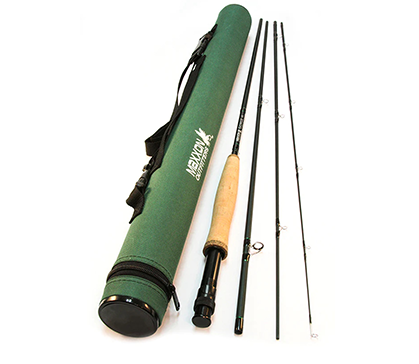
Fly fishing is a challenging technique that uses a lightweight or nearly weightless lure (known as a fly) to mimic the movements of insects or other prey. This method requires specialized equipment, including a fly rod, fly reel, and fly patterns designed to attract different species under various conditions.
Fly fishing is most often associated with catching trout and salmon in rivers and streams, but it’s also versatile enough to be used for a wide variety of species in both freshwater and saltwater. The key to fly fishing success is mastering the art of casting. This requires skillfully placing the fly on the water to mimic the natural movements of the fish’s prey, which is essential for attracting bites.
Ice Fishing
In regions where lakes and rivers freeze during winter, ice fishing allows you to pursue your angling passion even in extreme conditions. This technique involves cutting holes in the ice and using specialized gear, such as ice fishing rods, tip-ups, and jigging lures, to catch fish through the opening.

Ice fishing requires a solid grasp of ice safety and an understanding of where fish tend to gather beneath the ice. Tools like chart plotters like the Humminbird Apex and underwater cameras help anglers pinpoint fish and underwater structures. Techniques like jigging or deadsticking are used alongside these technologies to locate fish and provoke them to strike.
Trolling
Trolling is a popular fishing technique in which you pull lures or bait through the water from a moving boat. This method effectively targets species that actively feed on moving prey, such as salmon, tuna, marlin, and many types of freshwater game fish.
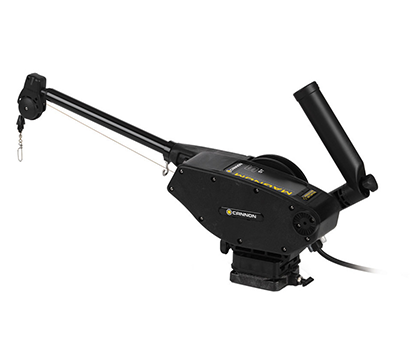
For successful trolling, you need a carefully chosen spread of lures or baits presented at the appropriate depths and speeds to imitate the movements of baitfish or other prey. Specialized trolling gear, such as downriggers or planers, helps you present your bait correctly. You can also use tactics like zigzagging or staggering lure depths to cover more water and increase the chance of success.
Drift Fishing
Drift fishing is an excellent technique for both saltwater and freshwater environments. In this method, you position or drift the boat along with the current or wind while presenting baits or lures in the path of fish.
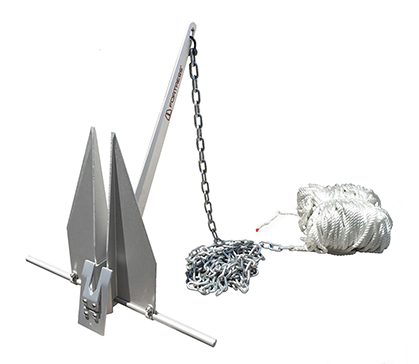
Drift fishing is effective in rivers, streams, and coastal areas where fish gather in specific areas or follow predictable feeding patterns. It also requires gear like drift rods, boats, or anchoring systems to maintain control and presentation while drifting.
Tackle Fishing Techniques
While some fishing techniques rely heavily on specialized skills or equipment, others revolve around the strategic use of tackle and lures to trigger strikes from fish.
Bottom Fishing
Bottom fishing means presenting the baits or lures on or near the bottom of a body of water. This technique targets species that feed on or near the bottom, such as catfish, flounder, halibut, and other bottom-dwelling fish.
Bottom fishing often uses Carolina rigs, Texas rigs, or drop-shot hooks designed to keep the bait or lure in close contact with the bottom. You must also have a working knowledge of bottom structure, currents, and fish behavior to identify productive areas and naturally present the bait or lure.
Jigging
Jigging is a versatile technique that vertically moves a lure or bait up and down in the water column to imitate the movements of baitfish or other prey. This method targets freshwater game fish like walleye and bass or saltwater species like tuna, snapper, and grouper.

Successful jigging relies on using specific jigs or metal lures such as rattling jig baits and chatter baits. These lures are engineered to create vibrations and erratic movements that trigger strikes from predatory fish.
Popper Fishing
Popper fishing uses top-water lures designed to create a popping or splashing action on the water’s surface. This method targets species that feed on baitfish or other prey near the surface, such as bass, pike, and other saltwater game fish.
Popper fishing requires precise lure presentation and a strategic retrieve to create a realistic and enticing surface disturbance. You can also use popper lures, which feature cupped or concave faces that create a distinctive popping sound and splashing action when retrieved correctly.
Casting
Casting is a core (and most commonly known) fishing technique in which a rod and reel propel the lure or bait out over the water. While it may seem like a basic concept, mastering the art of casting requires consistent practice, proper form, and an understanding of rod length, lure weight, and casting distance.
Casting is a versatile technique that can be applied in numerous fishing scenarios, from shore fishing to fishing from a boat. It enables anglers to target areas that might be unreachable or challenging to access with other methods.
Whether casting top-water lures for bass, flipping jigs into dense cover, or sending live bait rigs out into deep offshore waters, becoming proficient in accurate casting is essential for any angler.
Deep Sea Fishing Techniques
Deep sea fishing techniques offer an exciting and rewarding experience for anglers seeking the ultimate challenge and the thrill of battling powerful, hard-fighting fish.
Big Game Fishing
Big game fishing is the pursuit of some of the world’s largest and most formidable fish species, such as marlin, tuna, sailfish, and swordfish. This technique often involves trolling with heavy tackle and specialized lures or baits designed to attract these apex predators from great depths.
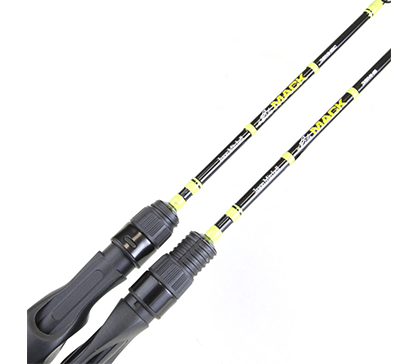
Successful big-game fishing requires a combination of skill, strength, and rugged equipment, like heavy-duty rods and baitcasting reels capable of withstanding the immense power and long, blistering runs of these massive fish. Techniques like kite fishing or using outriggers to spread out your baits can also increase the chances of attracting a strike.
Once a fish is hooked, the battle truly begins, requiring every ounce of your strength and expertise to subdue these powerful creatures. Big game fishing is not for the faint of heart, but the rush of adrenaline and sense of accomplishment that comes with landing a true monster of the deep is unparalleled.
Sport Fishing
While big game fishing focuses on the largest and most prestigious species, sport fishing covers a broader range of techniques and target species in offshore waters. This can include pursuits like deep-drop fishing for species like tilefish and snapper, baiting for tuna or kingfish, or trolling for wahoo, dolphinfish, and other pelagic predators.
Sport fishing often requires a combination of specialized tackle, techniques, and an understanding of the underwater environment. Use downriggers, planers, or other gear to present your baits at precise depths, or use methods like chunking or chumming to lure and keep fish in your desired spot.
Whether you’re targeting hard-fighting yellowfin tuna, acrobatic sailfish, or other offshore species, sport fishing offers a unique and thrilling experience that combines the challenges of deep sea angling with the beauty and unpredictability of the open ocean.
Choosing the Right Fishing Technique for You
At FISH307, we get it—every angler is different. That’s why our team is committed to helping you navigate the wide world of fishing techniques to find the perfect fit for your unique style and goals.
From traditional methods like hand and net fishing to modern innovations like fly and deep sea fishing, we offer a comprehensive selection of equipment and accessories to support your angling adventures.
Contact us today to connect with our team of anglers and find the gear you need to perfect your fishing techniques and transform your angling experience.
Recent Posts
-
Ice Fishing Safety 101: What Every Angler Needs To Know
Ice fishing offers a unique thrill, but safety should always come first. Knowing the basics of ic
-
Ice Fishing Season Prep: Your Essential Pre-Ice Checklist
When the lakes start freezing, it’s time to swap your boat for an ice auger. But before you hit the



